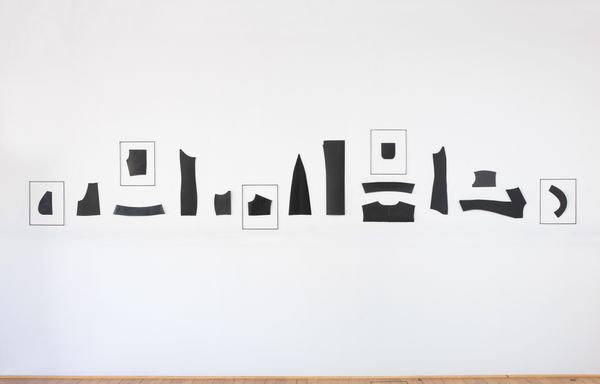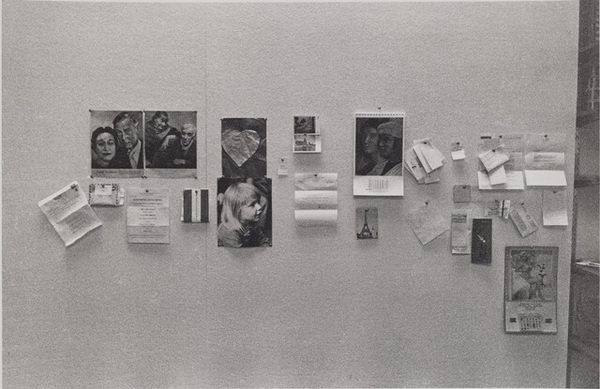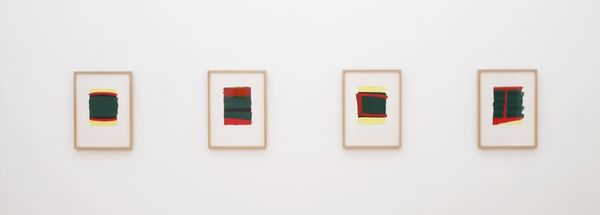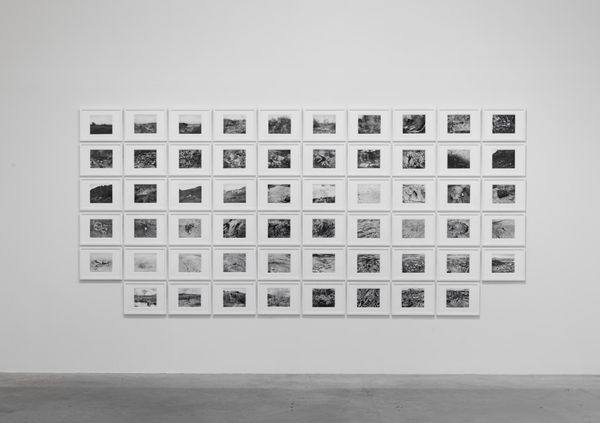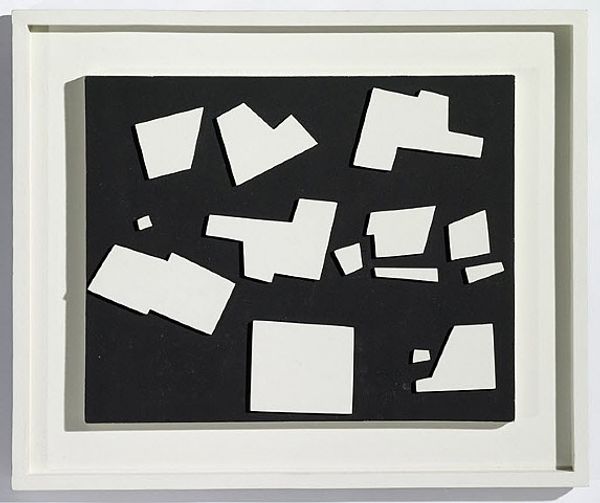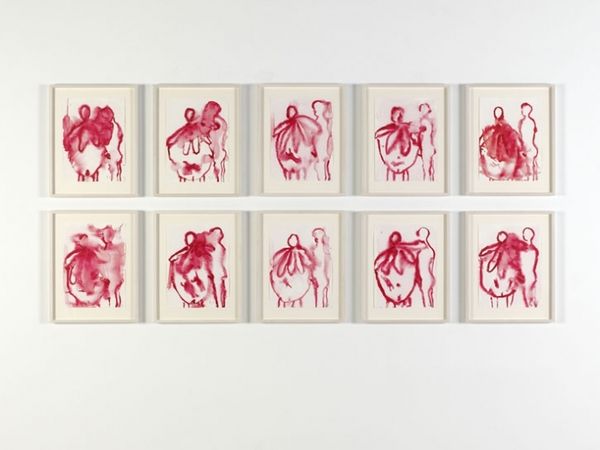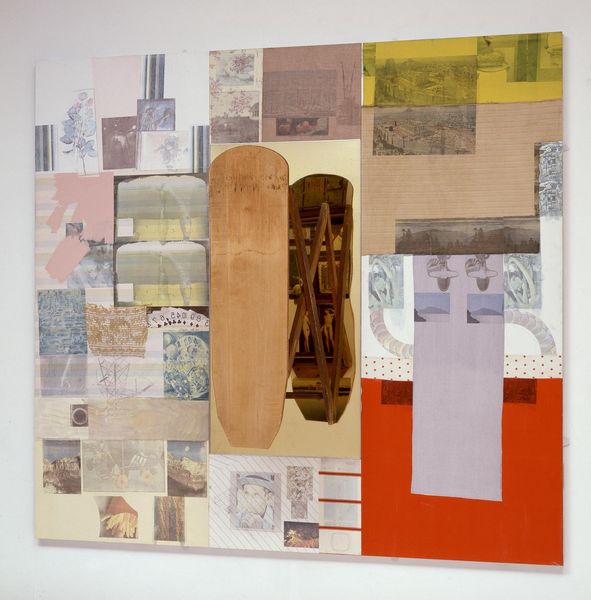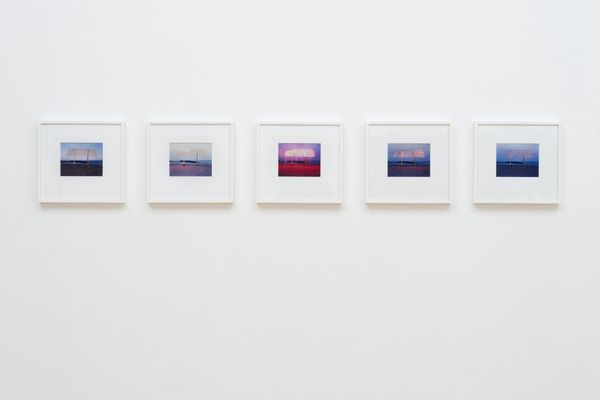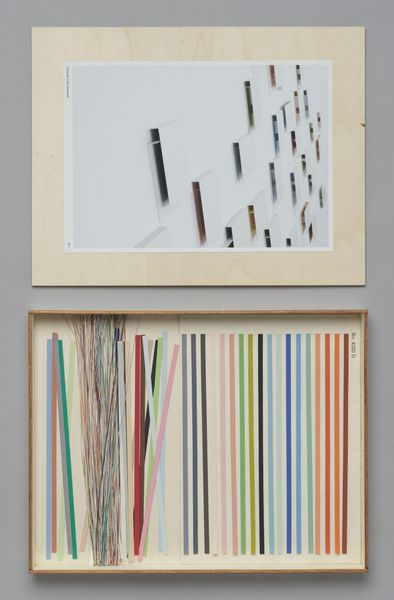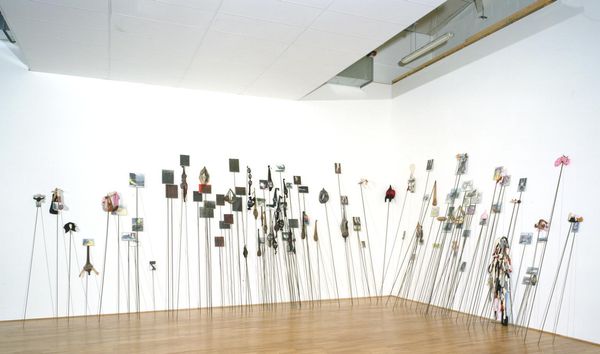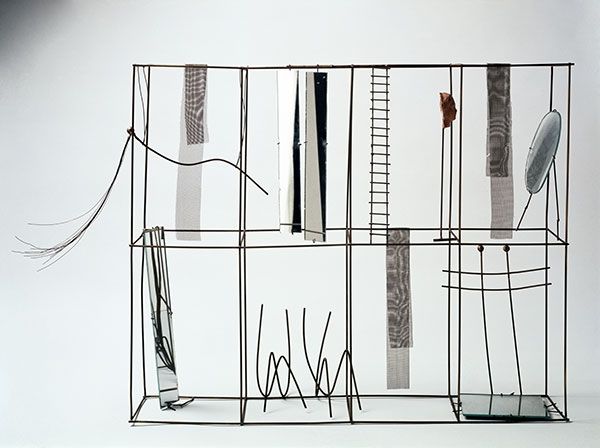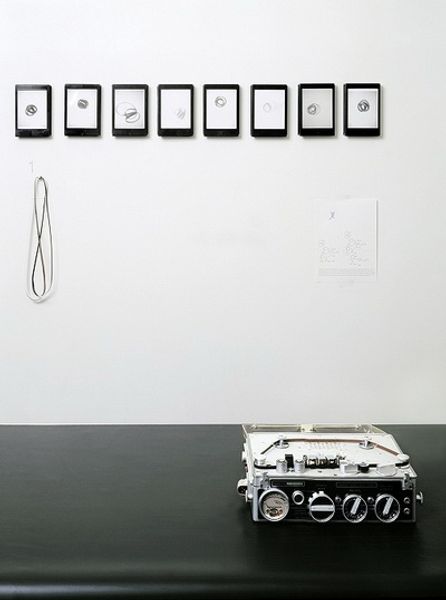
Copyright: Herman de Vries,Fair Use
Curator: Herman de Vries created this artwork in 2003, calling it “The Return of Beauty.” It's a mixed-media installation composed of watercolor paintings, found objects, and installation art, quite a combination. Editor: It's… intriguing. The immediate impression is of a scientific collection, perhaps of organic specimens pinned for display. The limited color palette really amplifies that effect. Curator: Precisely! De Vries often explores the intersection of nature and art. He curates reality itself, presenting natural objects within a formal framework, altering our perception of the mundane. Semiotics would be key here; he isolates natural fragments, essentially creating signifiers. Editor: That resonates with me. I wonder how it functioned in its original gallery setting. Were there contextualizing materials? De Vries clearly plays with our inherent drive to classify and understand, but isolating these things begs the question of selection: Why *these* fragments? Was it site-specific, a comment on environmental concerns perhaps, during that historical period? Curator: An astute question. It could also function as an institutional critique itself. Museums often legitimize objects through display. By presenting what would be considered ordinary natural scraps, De Vries challenges the hierarchy of value, forcing us to question aesthetic merit in an interesting postmodern gesture. Editor: He democratizes the aesthetic experience. Rather than being awed by grand canvases, we're invited to find beauty and interest in humbler elements. Was de Vries an ecologist or particularly politically active within the environmental art movements of the time? Curator: More of a philosophical bent, I believe. It’s his focus on natural phenomena rather than environmentalism that speaks volumes; in essence, these elements contain an inherent beauty. De Vries urges us to appreciate it by removing the visual clutter that is, frankly, modern living. Editor: Yes, there’s something very meditative in its repetitive format that invites one to slow down and to study the natural details carefully. Overall, a very successful demonstration of both intellectual engagement and delicate skill. Curator: Absolutely. It is one work that certainly makes you stop to question where exactly, can be found art within nature. Editor: It certainly prompts the question, what indeed, constitutes art.
Comments
No comments
Be the first to comment and join the conversation on the ultimate creative platform.
